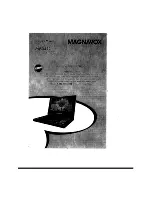
MIOX AE Series Operators Manual
102-00085-E
Page
43
Oxidant Demand Testing
The oxidant demand of water is a measure of the amount of oxidant needed to properly disinfect water.
This value is extremely important for accurately sizing and maintaining MIOX equipment. Oxidant
demand is determined by adding oxidants in several concentrations to raw untreated (sample) water
and measuring the FAC over time.
Equipment Needed
100 mL graduated cylinder
Four (4) 100 mL glass jars with lids
Pipette that can accurately measure 0.1 mL increments
Chlorine test like (i.e. DPD, Color Wheel, Colorimeter, or AccuVac)
Timer or watch
Calculator
Identify Starting Range
The initial oxidant demand test should use a 5 ppm dose to identify the correct starting range. If a 5
ppm dose is consumed in less than 30 minutes, the demand of the water is greater than 5 ppm, and the
dose rates of 10, 15, and 20 ppm should be used for testing. Conversely, if the 5 ppm dose is only
moderately decreased in 30 minutes testing should be performed with 1, 3, and 5 ppm doses.
Use the following formulas to determine the amount of oxidant and sample water to use (based on 100
mL samples).
Dilution Factor (X) = Oxidant FAC / Dose
mL of oxidant = 100 / X
mL of sample water = 100 - (100 / X)
Oxidant FAC is the concentration of oxidant, which varies with each MIOX OSG model. The output of
each unit should be measured, according to the procedure for Chlorine Testing, to determine the exact
concentration of the oxidant and catholyte.
Example:
1. Determine the amount of oxidant and sample water to be used. Always start with start with a 5 ppm
dose for the first test. Suppose you are using a MIOX OSG that just generated an oxidant solution
concentration of 250 ppm. First, you must determine the dilution factor (X):
Dilution Factor (X)
= Oxidant FAC / Dose = 250 / 5 =
50
2. Determine the volume of oxidant and sample water to be used based on X:
mL of Oxidant
= 100 / X = 100 / 50 =
2 mL
mL of Sample Water
= 100 - (100 / X) = 100 -(100 / 50) = 100 - 2 =
98 mL












































